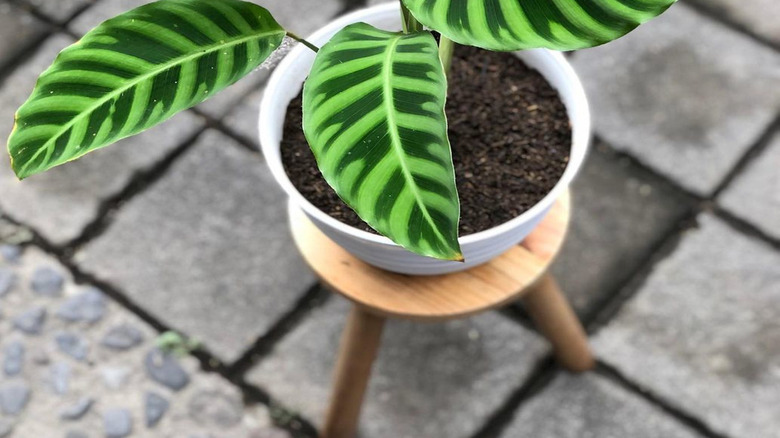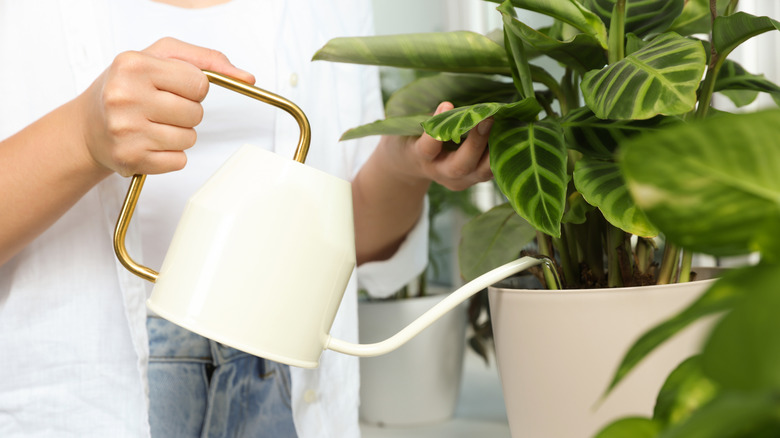Commons Problems With Growing Zebra Plants Indoors And How To Fix Them
We may receive a commission on purchases made from links.
Zebra plants (Calathea zebrina) are popular houseplants because of their uniquely striped foliage. However, like others in the Calathea genus, they can be a little picky about their care requirements, particularly their preferred moisture levels. Native to Brazil, these tropical beauties thrive in warm, humid climates. Because of their unique needs, many plant lovers may struggle to provide the right conditions inside, especially in the winter. Brown leaf tips or leaf curling may indicate low humidity, signaling it's time to increase the moisture in the air.
This gorgeous plant will thrive in your humid bathroom, assuming it gets the proper amount of sun. Another way to increase humidity is to mist your zebra plant throughout the day or place a tray of water and pebbles underneath. As the water evaporates, it'll provide extra moisture for your plant. If all else fails, a compact humidifier, like Roeskm Ultrasonic Humidifier, is perfect for creating a more humid environment in a small room.
Zebra plants require careful watering
Another way to save your zebra plant from crispy edges is to make sure you're giving it the proper amount of water. If you own another type of Calathea, you may have noticed how dramatic they can be when they need a drink. Without enough water, the tips of the leaves will start to dry out, causing them to turn brown. Although a lot of beginner plants do well with drying out between waterings, zebra plants prefer consistently moist soil. However, just because they don't like dry soil doesn't mean you should constantly water them, either. Zebra plants can be a little tricky, as drooping leaves can signify your plant is getting too much or not enough water. However, yellowing leaves, in addition to drooping, is a pretty good sign they're receiving too much moisture.
You may have to experiment a bit to create the perfect watering schedule for your zebra plant. Do a touch test by sticking your finger into the soil about a knuckle deep to gauge the moisture. When the top couple of inches of soil are dry, water your plant by soaking the soil and letting it drain out through the bottom. Drainage holes are critical to avoid diseases like root rot, and you can also add drainage materials to relieve your plants of excess moisture. If you're feeling confident about your watering routine, it could be the water itself causing problems. Zebra plants are sensitive to some tap water, so try switching to filtered water or rainwater the next time you water your plant.

